Due to the age of publications, certain works listed are no longer in print. Print-on-demand services are available for some titles upon request.
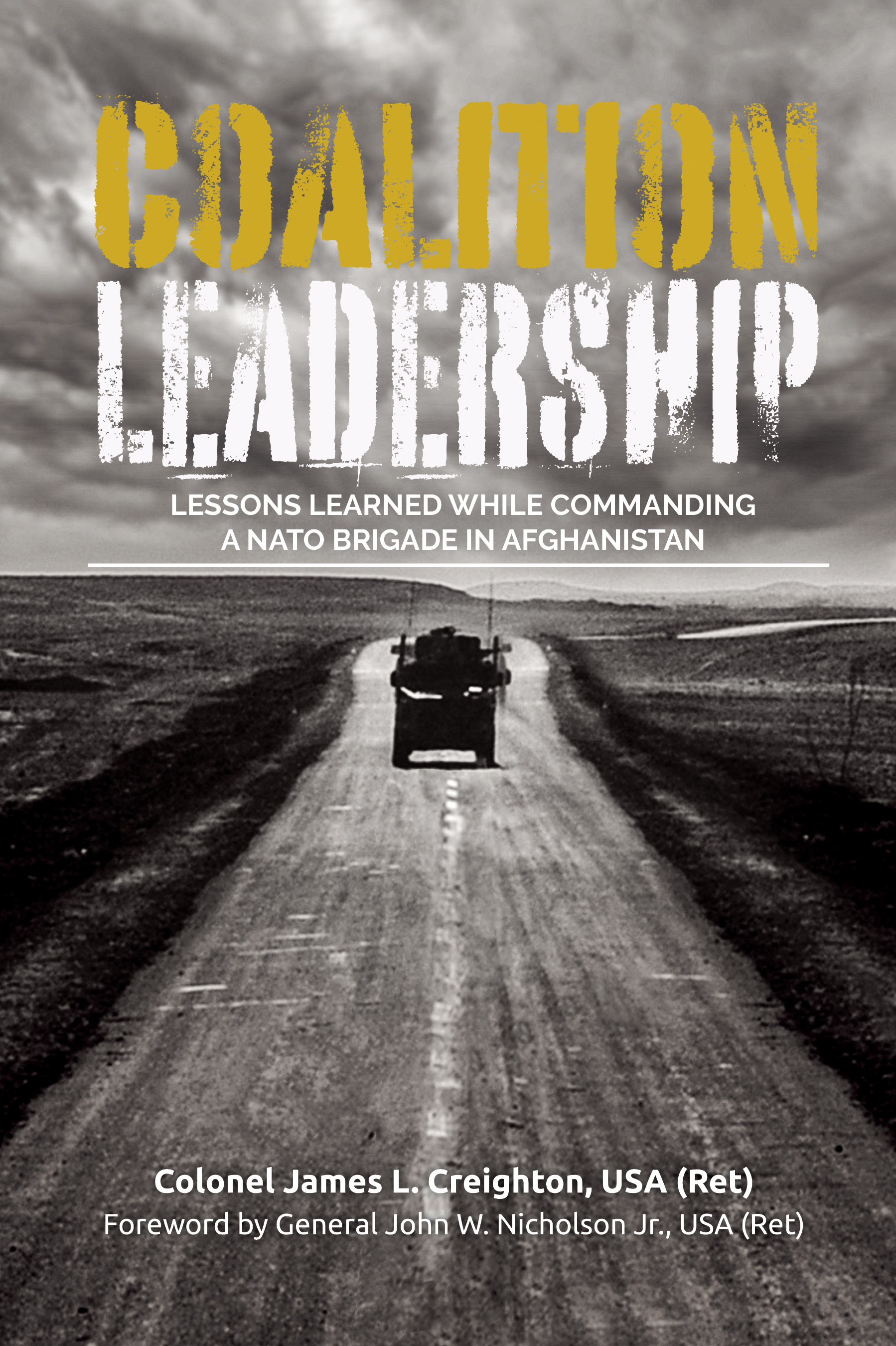 Coalition Leadership
Coalition Leadership
Lessons Learned while Commanding a NATO Brigade in Afghanistan
By Colonel James L. Creighton, USA (Ret)
Colonel Creighton’s command provides an excellent case study in the leadership of coalitions, which are critical to the United States now and in the future. The U.S. military’s mission in Afghanistan enjoyed significant legitimacy because it operated within a coalition that was based on international mandates from the United Nations and the North Atlantic Treaty Organization (NATO). These mandates enabled unity of purpose among the more than 50 nations that joined the Coalition and sustained that unity for more than 20 years.
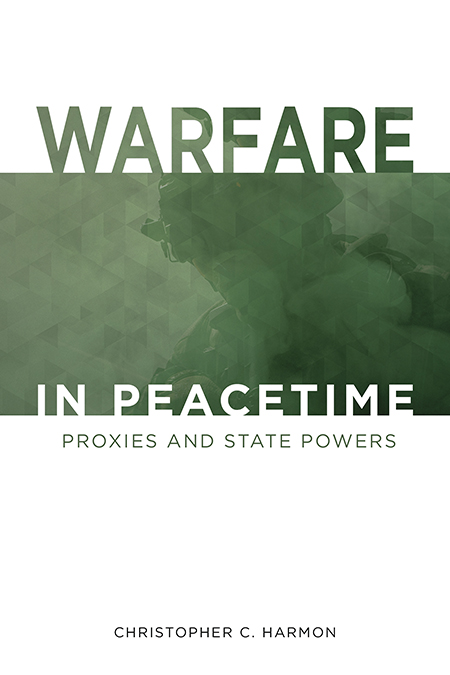 Warfare in Peacetime: Proxies and State Powers
Warfare in Peacetime: Proxies and State Powers
By Christopher C. Harmon, PhD
Warfare in Peacetime offers an expansive and elaborated portrait of overseas proxy wars. The structure and substance will prepare observers, analysts, and participants seeking to understand challenges before American and other statesmen. The work helps frame the morass in Syria, with all its foreign links; the contest for influence in Libya, where innumerable hands vie for dominance; the fighting in Yemen, where Houthi Shia organizations backed by Iranian sponsors battle Sunni tribes; and life along the borders of Russian expansionism, where Ukrainians plea for outside assistance, including weapons from Washington. Such ongoing “warfare in peacetime” has a thousand precedents in a dozen ages, including our day, and some of the patterns are explored along with detailed case studies.
 The Trillion Dollar War
The Trillion Dollar War
The U.S. Effort to Rebuild Afghanistan, 1999–2021
By Abid Amiri
What if the U.S. war on terror in Afghanistan was fought not by the military but by educating the Afghan youth, and what if the trillion dollars had been spent instead on economic development in Afghanistan rather than on bombs and fighter jets? The Trillion Dollar War helps explain the United States’ efforts to rebuild Afghanistan during the last 20 years. The book outlines the successes and failures of both Afghans and Americans in this endeavor. In addition, it provides an in-depth analysis of the cost of America’s longest war, and it asks whether spending more on education and infrastructure than on weapons of war would have resulted in a different outcome.
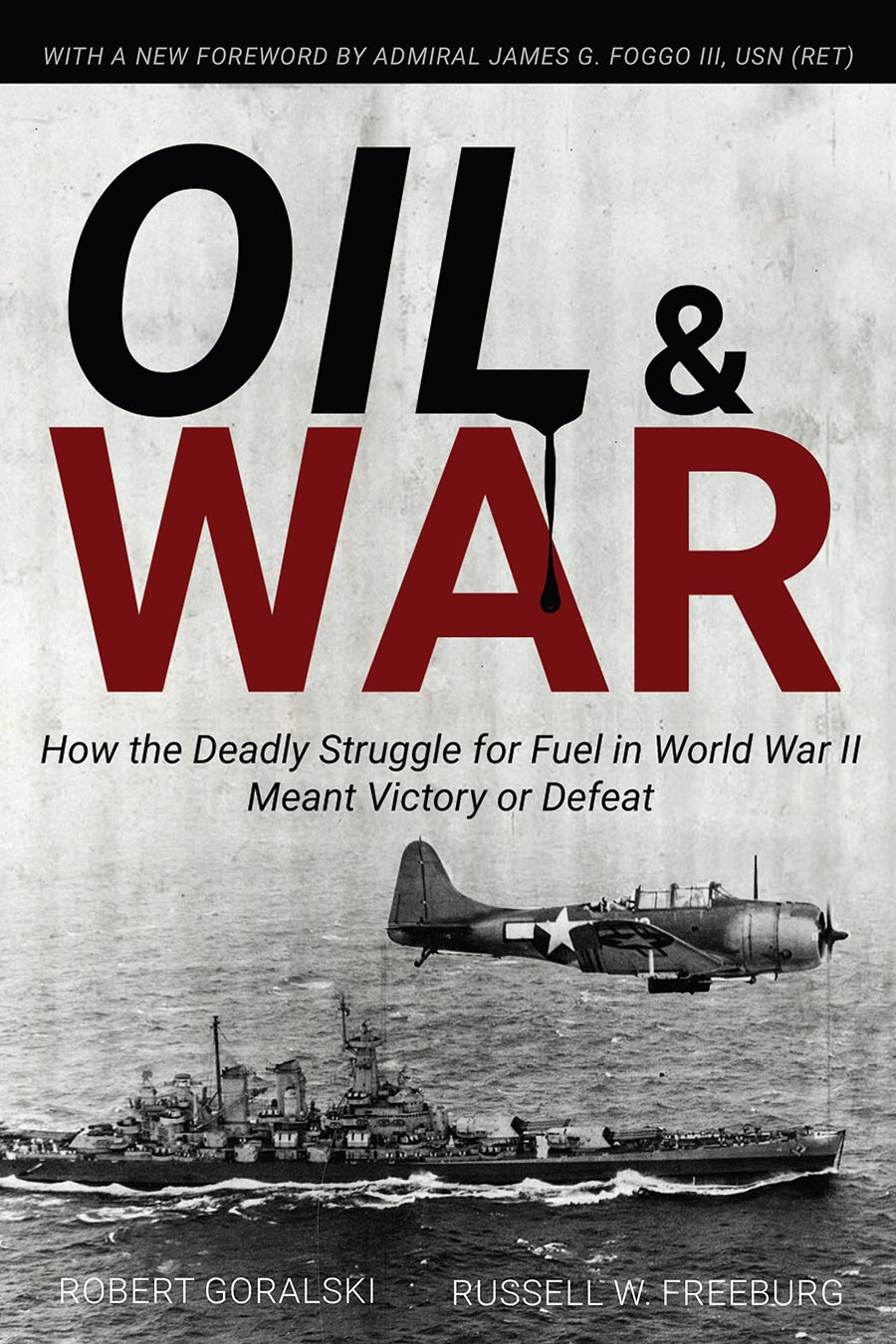 Oil & War
Oil & War
How the Deadly Struggle for Fuel in World War II Meant Victory or Defeat
By Robert Goralski and Russell W. Freeburg
The world’s economy runs on oil. People steal for it. Nations kill for it. To win a war, the victor must have enough oil to fuel their tanks, ships, and planes. One of the great untold stories of World War II is about the strategic decisions and combat for the control of enough oil so that the Axis powers could wage an aggressive war. Conversely, the Allied powers were determined to keep oil from the Axis. Oil & War, originally published in 1987, was the first book to explain this intricate dance of death from the view-points of both the Axis and Allied sides. Adolf Hitler began planning his grab for oil-producing lands in the 1930s; he also started building plants capable of producing synthetic fuels. The Japanese had their plans too. The Americans, English, and Australians had to counterpunch. They very nearly lost the war because they did not move quickly enough. The race was far closer than previously believed. Truth is stranger than fiction. Novels and wargames based on the strategies for oil have captured the public’s attention. But here is the real story. This anecdotal narrative about the important role that oil played in World War II provides a view of the forces that controlled the greatest war in history—and a stunning analysis of the importance of oil in terms of world peace for years to come.
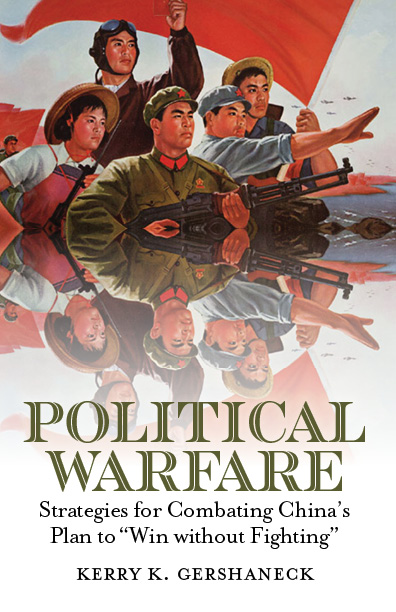 Political Warfare
Political Warfare
Strategies for Combating China's Plan to "Win without Fighting"
By Kerry K. Gershaneck
Political Warfare provides a well-researched and wide-ranging overview of the nature of the People's Republic of China (PRC) threat and the political warfare strategies, doctrines, and operational practices used by the Chinese Communist Party (CCP). The author offers detailed and illuminating case studies of PRC political warfare operations designed to undermine Thailand, a U.S. treaty ally, and Taiwan, a close friend.
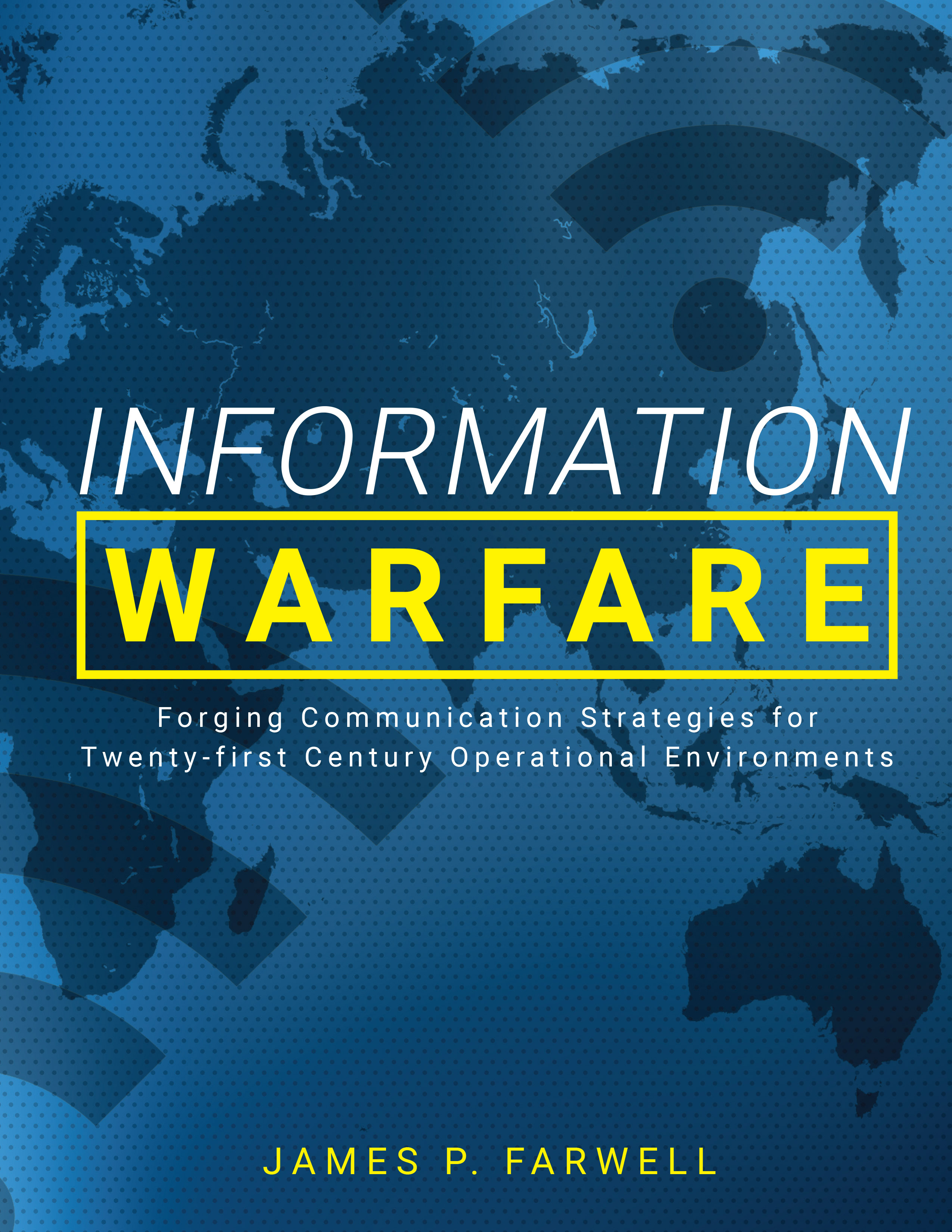 Information Warfare
Information Warfare
Forging Communication Strategies for Twenty-first Century Operational Environments
By James P. Farwell
Great political and military leaders understand that communication strategies are key to victory in any conflict. Seizing the narrative can enable victory while failure to do so yields that advantage to the adversary. Gone are the days when competing armies confronted one another across battlefields. The information environment has made engagements and conflict both local and global all at once such that—as never before—information warfare is critical to victory. Understanding culture, history, local political dynamics, the interactions of different players, and the need to forge cohesive communication plans at the strategic, operational, and tactical levels matters more than ever to commanders and operators. In Information Warfare, James P. Farwell describes how commanders and operators must and can define winning outcomes and the strategies, operations, and tactics to achieve them. He lays out concrete, actionable steps to get results and places them in historical context, then provides a workbook to assist readers in devising communication strategies that produce victory in the sphere of information warfare.
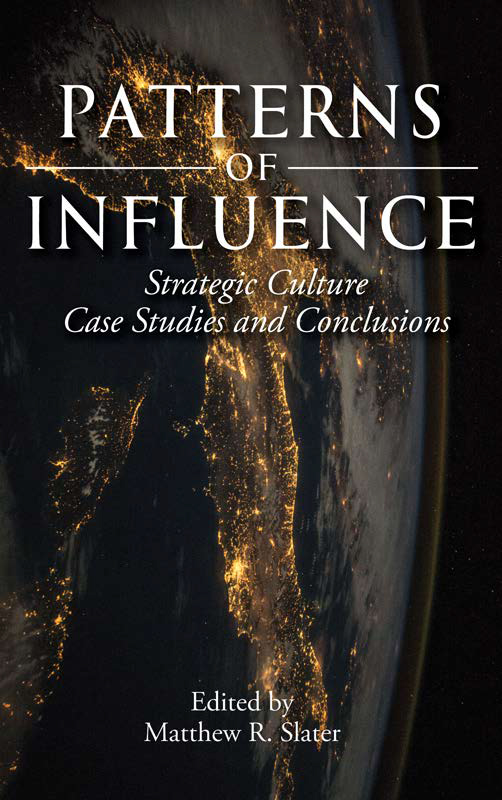
Patterns of Influence
Strategic Culture Case Studies and Conclusions
Edited By Matthew R. Slater
Patterns of Influence is a timely book because of its applicability to the emerging strategic environment. The world is realigning into a multipolar power structure. Multipolar structures are typically complex, especially when considering the overlapping spheres of influence claimed by the competing powers in the international system. Patterns of Influence enables researchers to cope with the complexity of multipolar networks by promoting a strategic culture approach that provides a better understanding of internal state decision making. This book provides important commentary regarding the overall utility of strategic culture on states with limited federal governance, newer states that are still forming political processes and institutions, and smaller states that may become lost in the wake of regional powers. This study of strategic culture is written by scholars who are experienced working within the Department of Defense, including chapters on China, Afghanistan, Brazil, and Kosovo. Not only are the case studies geographically dispersed but also include large and small states, states with fragmented and cohesive political and social systems, as well as recently installed and more established governments. The eclectic group of case studies provide a broad basis to compare outcomes based on the strategic culture approach.
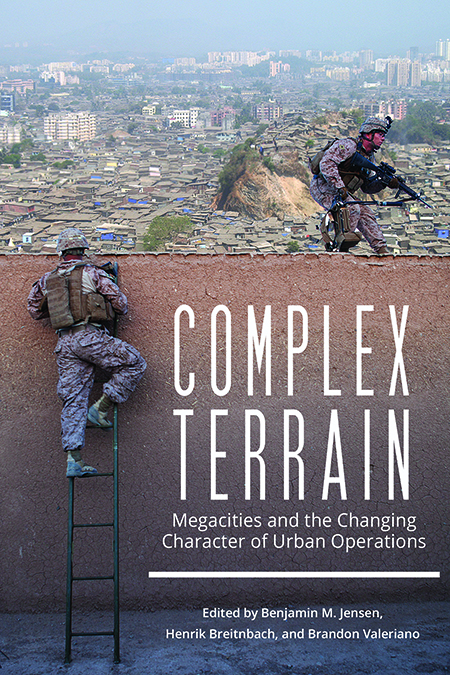
Complex Terrain
Megacities and the Changing Character of Urban Operations
By Benjamin M. Jensen, Henrik Breitenbauch, and Brandon Valeriano
This edited volume, composed by military professionals in the Gray Scholars Program at Marine Corps University, describes the changing character of urban operations. The pattern of human settlement and interaction is changing and the future is urban. Because the majority of the world’s population lives within cities, the future of strategic competition and conflict reside there as well.
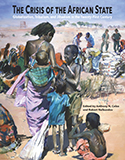 The Crisis of the African State
The Crisis of the African State
Globalism, Tribalism, and Jihadism in the Twenty-First Century
By Anthony N. Celso and Robert Nalbandov
Crisis of the African State focuses on security problems facing the twenty-first-century African state. Through multiple essays, the authors explore both current and past security issues associated with tribal warfare and jihadist terrorism within a rapidly changing global context where state sovereignty and institutional capability is in decline. Historic and modern situations have coalesced to create unique security challenges for many African states.
 New Approaches to Nonstate Armed Actors
New Approaches to Nonstate Armed Actors
Edited by Kenneth Williams
For as long as governments have existed, groups have been forming to oppose them. The twenty-first century has brought newly emerging insurgent or terrorist groups that are often more sophisticated than their predecessors. New Approaches to Nonstate Armed Actors presents leading experts in the field discussing the challenges associated with confronting such groups, including engagement, negotiation, de-radicalization, and intervention. Organizations addressed range from current operations such as Hezbollah, Hamas, al-Qaeda, the Taliban, and Mexican drug cartels to groups like the Irish Republican Army that are now a part of history. In addition to the presentations below, the book also includes a panel discussion with the participants moderated by Roger Hardy.
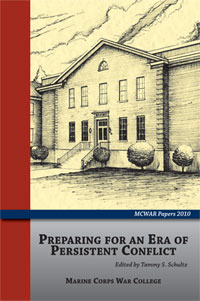 Preparing for an Era of Persistent Conflict
Preparing for an Era of Persistent Conflict
By Tammy S. Schultz
This edited volume contains the type of ingenuity that the United States needs at this critical juncture in its history. If we are at the threshold of an era of persistent conflict, U.S. leaders must consider unique capabilities, organizations, and missions to be successful. Even U.S. culture may need to adapt—if conflict is truly persistent, we may need to foster more resiliency than currently may exist in our culture. This volume takes a new look at capabilities, organizations, and missions in this era of persistent conflict, and closes with an analysis of how ultimately the country’s fate rests with its people, and the implications for that analysis.
 Raging Waters
Raging Waters
China, India, Bangladesh, and Brahmaputra River Politics
By Nilanthi Samaranayake, Satu Limaye, and Joel Wuthnow
The Brahmaputra River originates in China and runs through India and Bangladesh. China and India have fought a war over contested territory through which the river flows, and Bangladesh faces human security pressures in this basin that will be magnified by upstream river practices. Controversial dam-building activities and water diversion plans could threaten regional stability; yet, no bilateral or multilateral water management accord exists in the Brahmaputra basin. This project, sponsored by the MacArthur Foundation, provides greater understanding of the equities and drivers fueling water insecurity in the Brahmaputra River basin. After conducting research in Dhaka, New Delhi, and Beijing, CNA offers recommendations for key stakeholders to consider at the subnational, bilateral, and multilateral levels to increase cooperation in the basin. These findings lay the foundation for policymakers in China, India, and Bangladesh to discuss steps that help manage and resolve Brahmaputra resource competition, thereby strengthening regional security.
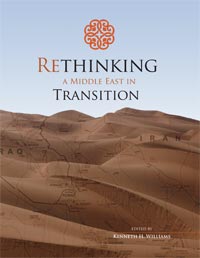 Rethinking the Middle East in Transition
Rethinking the Middle East in Transition
Edited by Kenneth Williams
This book documents conditions and perceptions in the Middle East on the eve of the momentous events that began in the Muslim world in January 2011. The region was indeed “in transition”—more than the participants knew—when they convened in Washington, DC, on 3–4 November 2010, for the Middle East Institute’s 64th Annual Conference. Indicative of the theme of the program, the underlying current for all of the panels was “where do we go from here?”—with the Middle East peace process; in dealing with Iran; in transitioning out of Iraq; in confronting nonstate actors; in examining the broader Middle East (including Turkey’s emerging role); and in facing the ongoing conflict in Afghanistan and Pakistan.
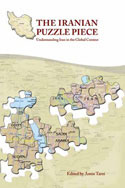 The Iranian Puzzle Piece
The Iranian Puzzle Piece
Understanding Iran in the Global Context
Edited by Amin Tarzi
A symposium at Marine Corps University, “The Iranian Puzzle Piece: Understanding Iran in the Global Context,” held in September 2008, sought to clarify the waters—to examine the “puzzle piece” labeled Iran and understand how it fits into the larger, global puzzle. Out of that symposium came these papers, which provide insight into the multifaceted nature of Iran and its regime, examine the feasibility and possible outcomes of official engagement of the regime, and discuss the domestic, regional, and international implications of Iran’s nuclear ambitions.
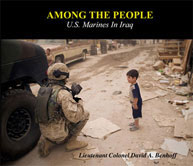 Among the People
Among the People
U.S. Marines in Iraq
By Lieutenant Colonel David A. Benhoff
The emphasis of this book is the human side of war and therefore the photographs that follow are of a subject matter that best illustrates this: Marines interacting with the Iraqi population at the personal level. This interaction is most often found among units that spend the vast majority of their time “outside the wire,” among the people, working to rebuild, restore, and improve security and infrastructure. Marines with missions related to these constructive aspects of the war generally fall into one of two categories: those conducting civil affairs or those training and developing the Iraqi Security Forces.
 Afghanistan
Afghanistan
Alone and Unafraid
By Lieutenant Colonel David A. Benhoff
It is clear from the first pages of Alone and Unafraid that Lieutenant Colonel David A. Benhoff uses a camera like an artist uses pastels. With this book Afghanistan, he reprises the success he met with in the production of his previous work on Iraq, Among the People, published by Marine Corps University Press in 2008. The current book is not intended to cover all aspects of the conflict in Afghanistan. Instead, we had asked Lieutenant Colonel Benhoff to use his skill with the camera to capture the interaction of Marines with the Afghan people and the Afghan National Army (ANA).
 Saddam Hussein's Nuclear Vision
Saddam Hussein's Nuclear Vision
An Atomic Shield and Sword for Conquest
By Norman Cigar
The intent of this study is to clarify why Saddam Hussein of Iraq wanted to acquire nuclear weapons. His regime never did obtain this capability despite its longstanding intent and concerted efforts to do so; to that extent, discussions about its outlook on this topic in a way remain theoretical. Nevertheless, Iraq certainly came close enough to reaching its goal, as apparently it was well on its way to doing so had the 1990–91 Gulf War not intervened. Moreover, apart from the interest in evaluating a key aspect of Iraq’s recent history, there is also broader merit in understanding the enduring issues related to how regional leaders may view nuclear weapons in this world of looming proliferation.
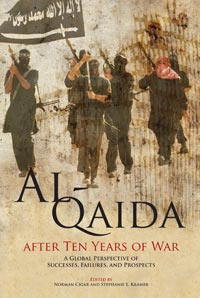 Al-Qaida after Ten Years of War
Al-Qaida after Ten Years of War
A Global Perspective of Successes, Failures, and Prospects
Edited by Norman Cigar and Stephanie E. Kramer
These papers represent the proceedings of the Marine Corps University conference “Al-Qaida after Ten Years of War: A Global Perspective of Successes, Failures, and Prospects.” Our intent in holding this conference was to comprehend the multidimensional aspects of Al-Qaida’s threat in various theaters where it has operated over the past decade since the events of 11 September 2001, or where it may still do so in the future. We sought a net assessment of what Al-Qaida has done successfully and where it has failed in different parts of the world in order to develop a better understanding of how to deal more effectively with the challenge that Al-Qaida still poses for international security.
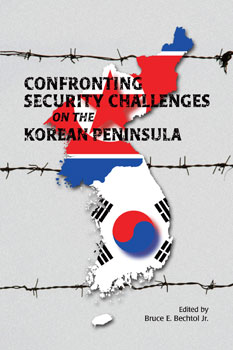 Confronting Security Challenges on the Korean Peninsula
Confronting Security Challenges on the Korean Peninsula
Edited by Bruce E. Bechtol Jr.
This volume and its authors have given us several important theoretical frameworks, new concepts, and diverse perspectives regarding the security challenges that Washington and its allies now confront on the Korean Peninsula. Through their research and writing, our distinguished scholars, military officers, diplomats, and practitioners have made valuable contributions to the scholarship relating to the security and the stability of the Korean Peninsula, and the threats and challenges that are imminent for the future.